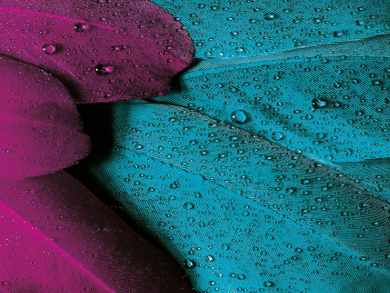It is known why birds have colored feathers, but not how the patterns are created on a cellular level. Two types of pigments, i.e., melanin and carotenoids, are mainly responsible for the coloration of the feathers, or plumage, of a bird. Melanins produce a range of black, gray, brown, and orange colors; carotenoids produce brighter hues.
Melanins are synthesized in melanocytes. These cells work together with feather follicles to achieve a fine control of pigmentation. For feathers with bright colors, birds must consume food that contains carotenoids, as they cannot produce these pigments. The carotenoids circulate through the bloodstream to the feather follicles. The body of a bird does not have direct cellular control over the deposition of carotenoids.
Ismael Galván, Estación Biológica de Doñana–Consejo Superior de Investigaciones Científicas, Sevilla, Spain, and colleagues have examined the plumage patterning of about 9,000 bird species. About 32 % of the species have complex plumage patterns. 98 % of these complex patterns are produced by melanins. Only three bird families, namely fruit doves, cotingas, and one type of stork, have unusual colors that are produced by their bodies making metabolic modifications to the carotenoid pigments that they consume.
- Complex Plumage Patterns Can Be Produced Only with the Contribution of Melanins,
Ismael Galván, Jorge García-Campa, Juan J. Negro,
Physiol. Biochem. Zool. 2017, 90, 600–604.
DOI: 10.1086/693962
Also of Interest
- The Colors of Life,
Julien P. Renoult and Bernard Valeur
ChemViews Mag. 2016.
DOI: 10.1002/chemv.201600025
The colors of the living world are produced by a wide variety of mechanisms




